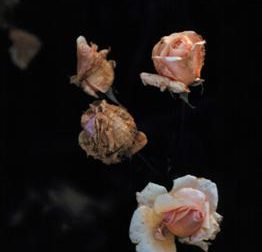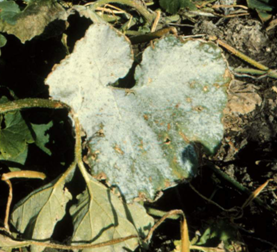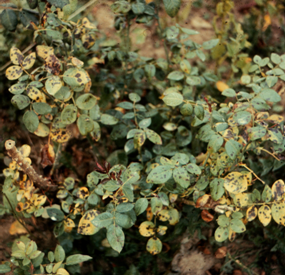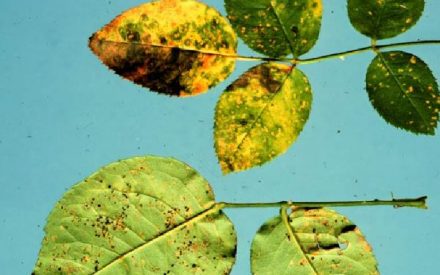What is gray mold?

Gray mold (or Botrytis blight) is a common and often serious fungal disease that can affect plants of all kinds. Gray mold is a particularly serious problem on flowering plants and plants grown in greenhouses.
What does gray mold look like?
Gray mold causes brown spots on flower petals that enlarge, killing the petals and eventually the rest of the flower. Early infections may prevent flowers from opening. On plants such as tulips, crocus, and daffodils, gray mold may spread from flowers into the bulbs leading to bulb decay. On leaves, Botrytis causes irregularly-shaped necrotic (dead) areas that may have a bull’s-eye pattern. Botrytis can also cause stem cankers (localized sunken areas) that may eventually enlarge to girdle a stem.
Where does gray mold come from?
Gray mold is caused by the fungus Botrytis cinerea, which survives on dead plant tissue as dark brown to black, multi-celled structures called sclerotia, and as thick, dark-walled, single-celled spores called chlamydospores. Botrytis produces large numbers of dusty, gray reproductive spores that are spread by wind or splashing water. These spores rapidly die when dried. Botrytis most readily infects delicate tissues such as flower petals. In order to infect tougher tissues such as healthy leaves, Botrytis spores require an external food source such as nutrients leaking from wounds or dead/dying tissues such as withered flower petals.
How do I save a plant with gray mold?
Promptly remove diseased leaves and flowers. Prune diseased branches four to six inches below the infection leaving a clean cut. Decontaminate pruning tools between cuts by treating them for at least 30 seconds with a 10% bleach solution or (preferably due to its less corrosive properties) 70% alcohol (e.g., rubbing alcohol or certain spray disinfectants). If you use bleach, thoroughly rinse and oil your tools after pruning to prevent rusting.
How do I avoid problems with gray mold in the future?
Remove dead or dying tissue from plants and the soil surface. Avoid wounding plants mechanically, or chemically by overfertilization or misuse of pesticide sprays. Reduce humidity around plants and germinate seedlings under warm, relatively dry conditions. Fungicides such as chlorothalonil and mancozeb can be used to prevent infections. Be sure to read and follow all label instructions of the fungicide that you select to ensure that you use the fungicide in the safest and most effective manner possible.
For more information on gray mold:
Contact the University of Wisconsin Plant Disease Diagnostics Clinic (PDDC) at (608) 262-2863 or pddc@wisc.edu.
Authors: Jeffory Schraufnagel*, Milwaukee Area Technical College, Brian Hudelson, UW-Madison Plant Pathology
Last Revised: 03/01/2024
D-number: D0056
*Completed as partial fulfillment of the requirements for an associate degree in Horticulture at the Milwaukee Area Technical College.
References to pesticide products in this publication are for your convenience and are not an endorsement or criticism of one product over similar products. You are responsible for using pesticides according to the manufacturer’s current label directions. Follow directions exactly to protect the environment and people from pesticide exposure. Failure to do so violates the law.
A complete inventory of UW Plant Disease Facts is available at the University of Wisconsin-Madison Plant Disease Diagnostics Clinic website: https://pddc.wisc.edu.
Send a Plant Sample for Analysis
Be cautious when self-diagnosing plant health issues. Very few diseases can accurately be diagnosed by eye.
Contact the UW Plant Disease Diagnostics Clinic (PDDC), and for a small fee, clinic staff can examine a plant, determine the cause of the disease/disorder, and provide advice on how to control or prevent the issue.
Download Article





 Powdery Mildew - Vegetables
Powdery Mildew - Vegetables Tobacco Rattle
Tobacco Rattle Black Spot
Black Spot Rose Rust
Rose Rust


